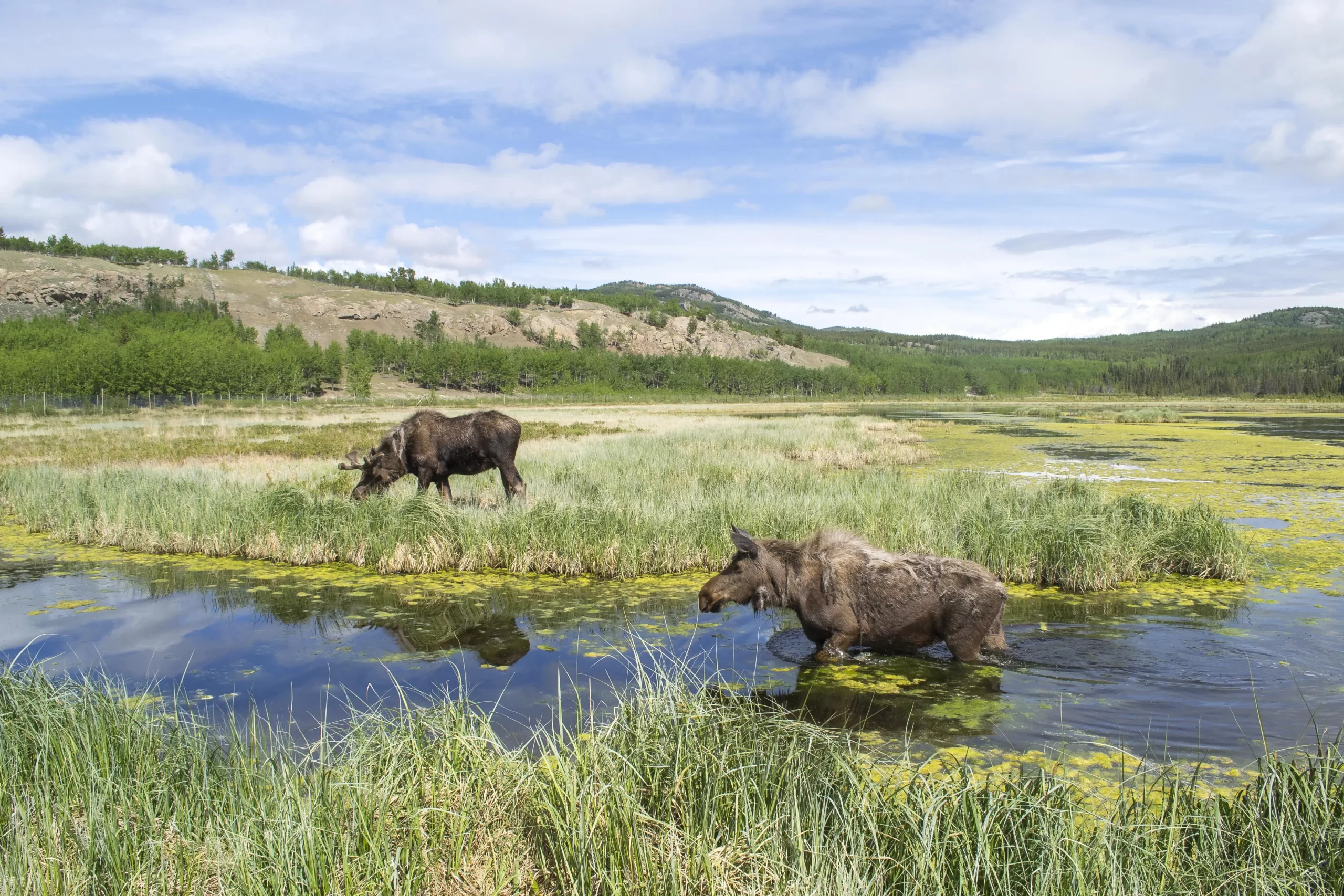
Breaking Down that Stink
2 minute read –
Nestled in the heart of the Takhini River Valley on the traditional territory of the of the Kwanlin Dün First Nation and the Ta’an Kwäch’än Council, is a haven for nature enthusiasts seeking a unique, immersive experience with Yukon’s native flora and fauna. Beyond the breathtaking landscapes and magnificent animal encounters, the Yukon Wildlife Preserve offers a unique opportunity to engage ALL of your senses. 364 days a year (we give the animals Christmas off,) you are invited into a sensory masterpiece. Visitors can witness the magic of nature through sight, sound, touch, and “ewww! What’s that smell!!??”
If you have visited us – especially during freeze up – you may have noticed a pungent odor… a formidable scent, around the preserve. No, that’s not Sex Panther by Odeon – or the outhouse…. It does smell like a bad fart though.
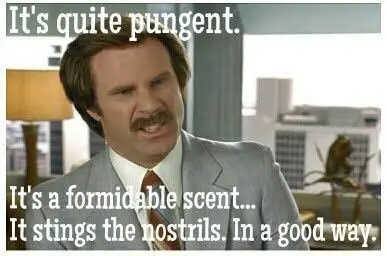
So, what is it? Well back in 2016 there was quite the algae bloom in the moose pond, which prompted a call to the scientists at the YG water department. They came out to investigate and what they found was quite interesting. I’ll admit that I’m no scientist, but I invite you to come along with me, as I do my best to “break this down” – This pun will make sense later…
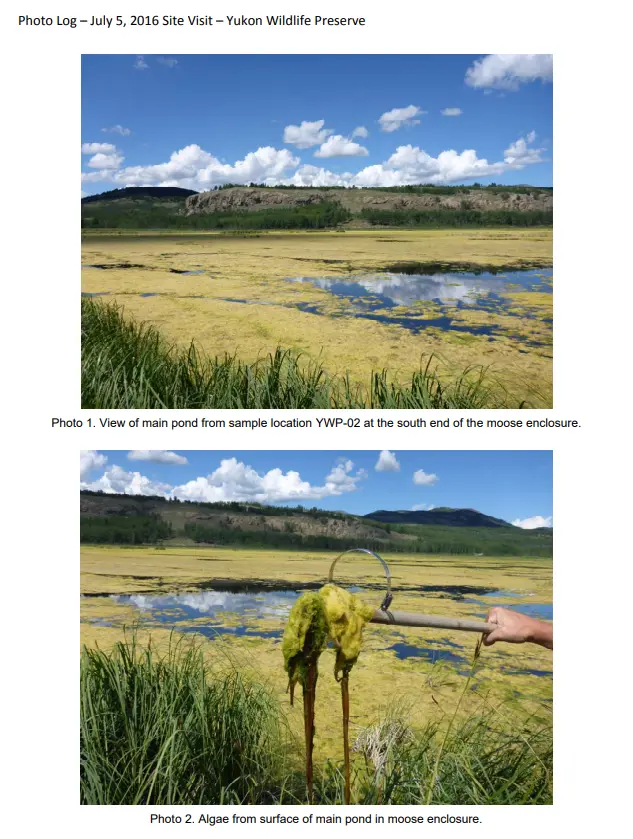
High Nutrient Availability with an absence of h2O:
The moose pond at the preserve is a beautiful and diverse habitat. It supports much more than our annual moose swimming competition! Just kidding, although wouldn’t that be an event to witness? My money would be on Watson! Every year, migratory birds, from as far as South America, land on our very special pond. We have counted over 50 different species in the area at the height of spring.
We also have muskrat, who call the pond home. You may have noticed their “push-ups” in winter (they look like a pile of dirt in the middle of the pond.) Our wild fox like to hunt the muskrat and will often use the frozen pond as a playground in the winter, checking each push-up and wrestling in between. Last but certainly not least, we have our Moose! For most of the year Jessie, Watson and its newest inhabitant Jake, reside in the moose habitat – using the pond to cool off in the summer heat and feasting on their favorite snacks that grow under water. So, needless to say, it’s a pretty happening place!
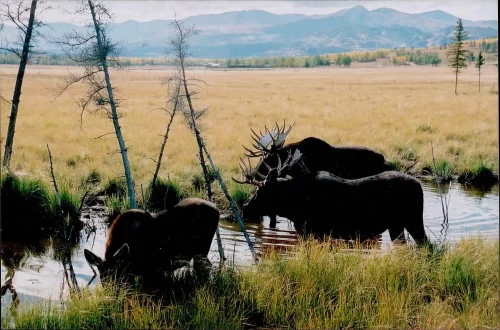
Why is this so important? Well the scientists at YG discovered that the Moose pond exhibits characteristics of Hypereutrophic water, which is a fancy way of saying it’s jam packed with nutrients – specifically phosphorus and nitrogen. Where do these nutrients come from? Well, the decay of natural organic matter like plants, moose feed, and … poop! Lots of poop, in the pond. This overabundance of nutrients allows plants and algae that thrive in this kind of environment, to fill the pond. When the plants and algae fill up the pond, oxygen levels deplete and this creates something called anoxic conditions – a crucial factor in the odorous equation.
an·ox·i·a – an absence of oxygen.
So, as the plants and algae take over the pond, there is less space for oxygen and this sets the stage for anoxic processes to begin. These conditions provide an ideal environment for the explosion of sulfate-reducing bacteria and these bacteria really get the party started. They are basically in there, having a massive feast, “breaking down” (remember that pun ) all the plants and poop, which ultimately leads to the production of hydrogen sulfide (H₂S) gas – the infamous “rotten egg” odor.
Sulphur Source:
Now our moose pond is special. Not only does it have the bacteria endlessly feasting on poop, but it also has another smelly source feeding the frenzy. High sulphate levels detected in 2016 pinpoint a substantial sulfur source in the area – we are located on the Hot Springs road after all!
The potential origin of this sulfur lies in the surrounding rocks and beneath our feet. The Richthofen Formation is a large rock formation, made up of sedimentary rock (think sandstone, limestone & shale) that was formed in the early Jurassic period. That’s around 200 million years ago! Sedimentary rock often starts as sediments carried in rivers and deposited in lakes and oceans. Eventually this sediment settled, the water dried up and it all became cemented to form rock.
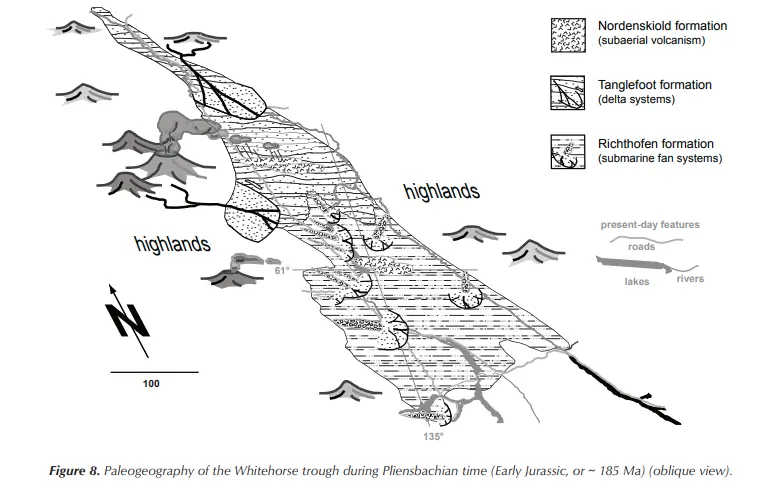
There is also groundwater and a local aquifer under our feet. As the ground water from rain, and spring melt flows over the mountains, into the valleys, into the ground and eventually to the aquifer, it slowly dissolves the sedimentary rock that was deposited here those millions of years ago. In this case, it’s dissolving a lot of shale. As the water breaks down the shale, it actually causes a similar reaction as the pond, where sulphates are again the star. And what happens when the sulphates are the main course at the party? Anoxic conditions and fuel for H₂S-generating bacteria. AKA – Stink Bomb x2!
The Freeze-Up Factor:
Now another interesting factor here, are the seasons. Some parts of the year just stink more than others and freeze-up is generally the worst. The freeze-up of the ground, before the pond water, may hold the key to the intensified scent during this period. Normally, H₂S contained in groundwater would degas along its flowy journey. However, during freeze-up, the gas becomes trapped in the frozen ground. So instead of flowing along, this causes the gas to migrate up to the open water and makes an extra special smell around certain parts of the pond – this is noted mostly where the pond flows out and under the road, at the crossroads. This spot is always the last to freeze, therefore it offers a way out for the trapped gasses, concentrating the smell.
Conclusion:
When you combine low oxygen, nutrient abundance, water and 200-million-year-old rocks, we solve the great mystery of “What’s that smell??” at the Yukon Wildlife Preserve. So, you can stop side eyeing the other guests in your tour group. It’s not the result of last night’s taco Tuesday! Just nature being neat in all its complicated intertwined beauty!
This blog is my interperatation of the Monitoring Report – Yukon Wildlife Preserve Algae Bloom from 2016 conducted by Yukon Department of Environment Water Resources Branch Water Quality Section Prepared by: John Minder Water Resource Technologist – Water Quality & Crystal Beaudry A/ Water Quality Technologist
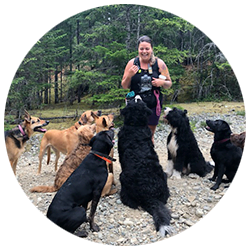
Brittney Forsythe
She/Her - Visitor Services Coordinator
Brittney joined the Wildlife preserve in the summer of 2023. Growing up on Northern Vancouver Island, surrounded by the temperate rainforest, nature and animals have always been a part of her life. It exploded into a passion, when she started her dog walking business in 2017 and she began spending 6-7 days a week in the forest, rain or shine! This sparked an even deeper appreciation for the cyclical nature of the land and how all of the plants & animals work together symbiotically. She is forever ‘that girl’ on the hike, pointing out different rocks and plants, explaining their origin or what they could be used for medicinally. Brittney and her dog Cedar relocated to the Yukon to help care for 31 sled dogs. She is so excited to expand her local knowledge as a part of the Preserve team.

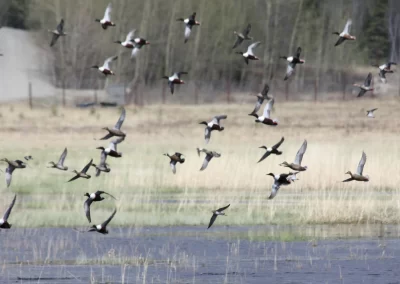
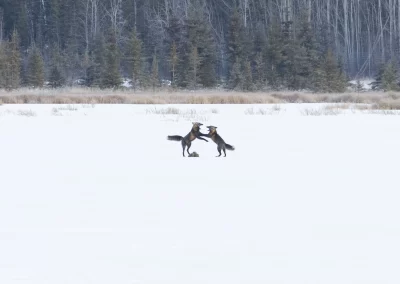
Thanks! That was very interesting and informative.